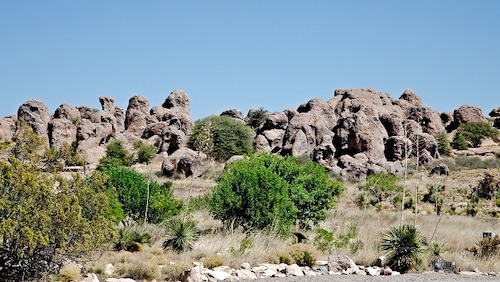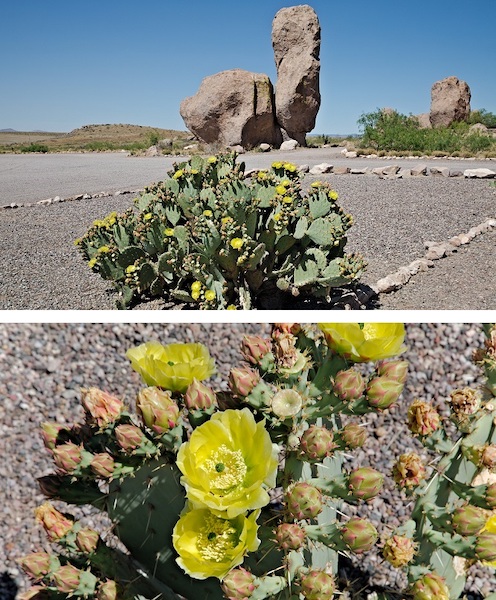The Chronicles Of Grant County
 The City of Rocks State Park is located in Grant County. (The photograph was provided courtesy of A J Brittain through Flickr, May of 2018.)
The City of Rocks State Park is located in Grant County. (The photograph was provided courtesy of A J Brittain through Flickr, May of 2018.)
Grant County includes one of the more unusual parks in New Mexico. The City of Rocks State Park is located in a rural section of Grant County, south of Hurley. According to the New Mexico Tourism Department, "The rock formations at the Park are so unique that they are only known to exist in six other places in the world."
"'City of Rocks' gets its name from the incredible volcanic rock formations found here," according to a statement from the New Mexico Energy, Minerals and Natural Resources Department (NMEMNRD). "The Park encompasses a one square mile area in the scenic Chihuahuan desert region of southwestern New Mexico at an elevation of 5,200 feet. The 'city' is a geologic formation made up of large, sculptured rock columns, or pinnacles, rising as high as 40 feet and separated by paths or lanes resembling city streets. These rocks were formed about 34.9 million years ago when a very large volcano erupted. Then, erosion over millions of years slowly formed the sculptured columns seen today, creating a stunning, otherworldly landscape."
Among features at this Park are camping sites as well as picnicking facilities. The City of Rocks State Park includes about 5.5 miles of trails for walking, hiking, and biking, according to the NMEMNRD.
"The wonders of this place must be seen to be appreciated, and as some one recently said, the place certainly has not been advertised as it deserves," reported The Deming Headlight in a news article dated October 3, 1924. "Approaching the City of Rocks, it looks much like a big pile of rocks, but on reaching it, marvels of nature are found."
The State of New Mexico indicated that birding is also a major activity here, with "western kingbird, curve-billed thrasher, cactus wren, scaled quail, western scrub-jay, sparrows, finches, and eastern meadowlark" among the most common birds found here. Other birds that the State of New Mexico indicated are also possible to see at this Park are the "lesser nighthawk, common poorwill, great-horned owl, and blue grosbeak."
A different type of wildlife was highlighted in a news article dated August 3, 1917, in the Albuquerque Morning Journal. This news article noted that a rattle snake – 5 feet, 4 inches long – was found at the City of Rocks; "its head measured two inches across."
In 2016, a report was issued detailing a management plan for the City of Rocks State Park. "The first official survey of the area was completed in 1868, and labeled the property that is now the Park as "City of Rocks," according to this report. "The US Department of the Interior controlled the land from 1868 until March 27, 1914, when it transferred the land to the State of New Mexico."
News reports in three newspapers indicated that the Governor of New Mexico attempted to have the City of Rocks made into a national monument by the Federal government in 1931. Those efforts did not succeed.
According to the 2016 report, the State of New Mexico established this Park in 1952, while officially opening the Park to the public four years later in May of 1956. Today, the City of Rocks State Park includes more than 2,934 acres of land located off of State Highway 61, near US Highway 180.
If you'd like to visit the City of Rocks State Park, the locale is open from 7:00 AM to 4:00 PM. The telephone number for this Park is 575-536-2800.
 A cactus in bloom at the City of Rocks State Park in Grant County. (The photograph was provided courtesy of A J Brittain through Flickr, May of 2018.)
A cactus in bloom at the City of Rocks State Park in Grant County. (The photograph was provided courtesy of A J Brittain through Flickr, May of 2018.)
Do you have questions about communities in Grant County?
A street name? A building?
Your questions may be used in a future news column.
Contact Richard McDonough at chroniclesofgrantcounty@mail.com.
© 2020 Richard McDonough